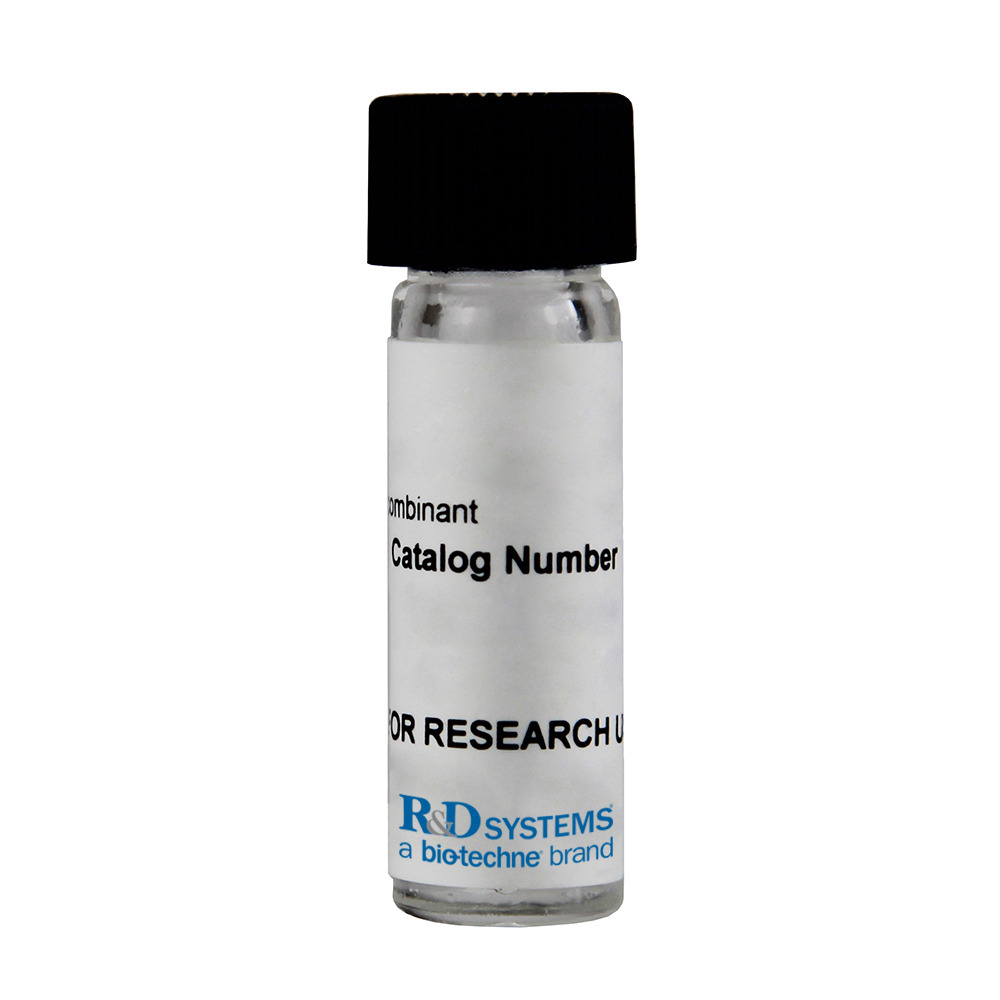Recombinant F. meningosepticum Endo F3 Protein, CF
R&D Systems, part of Bio-Techne | Catalog # 5548-GH

Key Product Details
Product Specifications
Source
Ala44-Asn329, with an N-terminal Met and 6-His tag
Purity
Endotoxin Level
N-terminal Sequence Analysis
Predicted Molecular Mass
SDS-PAGE
Activity
The DC50 is <12 ng. The DC50 is defined as the amount of enzyme required to remove 50% of glycan on 1 μg of recombinant mouse TSLP in 30 minutes at 37 °C. . Use of Recombinant F. meningosepticum Endo‑ beta‑N‑acetylglucosaminidase F3/Endo F3 in the delycoslyation of other substrates may require alternative conditions for optimal performance.
Formulation, Preparation and Storage
5548-GH
| Formulation | Supplied as a 0.2 μm filtered solution in Tris, NaCl and EDTA. |
| Shipping | The product is shipped with polar packs. Upon receipt, store it immediately at the temperature recommended below. |
| Stability & Storage | Use a manual defrost freezer and avoid repeated freeze-thaw cycles.
|
Background: Endo-beta-N-acetylglucosaminidase F3/Endo F3
N-glycans are commonly found on various glycoproteins. While peptide N-glycosidase from Flavobacterium meningosepticum (PNGase F) is widely used to release virtually all types of N-glycans under denaturing conditions, endo-beta -N-acetylglucosaminidases from the same bacterial species can be used under native conditions to specifically release particular types of N-glycans (1, 2). Because these glycosidases hydrolyze the chitobiose core of N-glycans, the released glycan products will contain one GlcNAc residue at their reducing ends with the other GlcNAc residue remaining attached to the asparagine residue on the glycoproteins. Endo F3 hydrolyzes bi- and triantennary N-glycans (3). In general, this enzyme is more efficient on core fucosylated N-glycans increasing activity up to 400-fold with biantennary structures (4). It also cleaves fucosylated trimannosyl core structures.
References
- Maley, F. et al. (1989) Anal. Biochem. 180:195.
- Tarentino, A.L. et al. (1985) Biochemistry 24:4665.
- Tarentino, A.L. et al. (1993) J. Biol. Chem. 268: 9702.
- Tarentino, A.L. and Plummer, T.H. Jr. (1994) Glycobiology 4:771.
Alternate Names
UniProt
Additional Endo-beta-N-acetylglucosaminidase F3/Endo F3 Products
Product Documents for Recombinant F. meningosepticum Endo F3 Protein, CF
Product Specific Notices for Recombinant F. meningosepticum Endo F3 Protein, CF
For research use only
